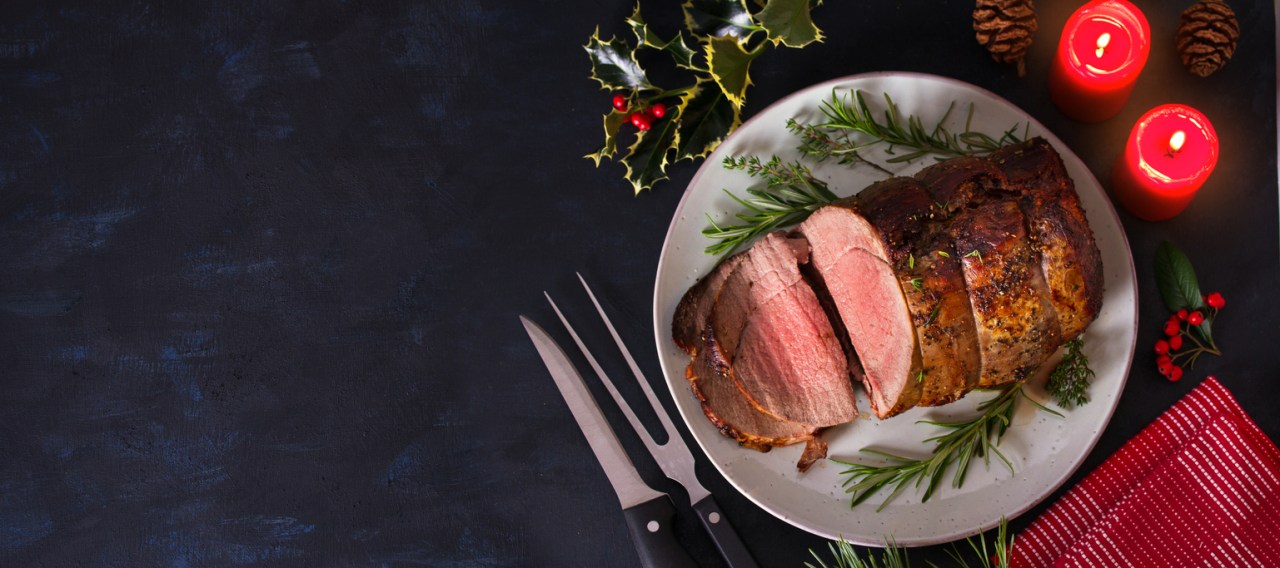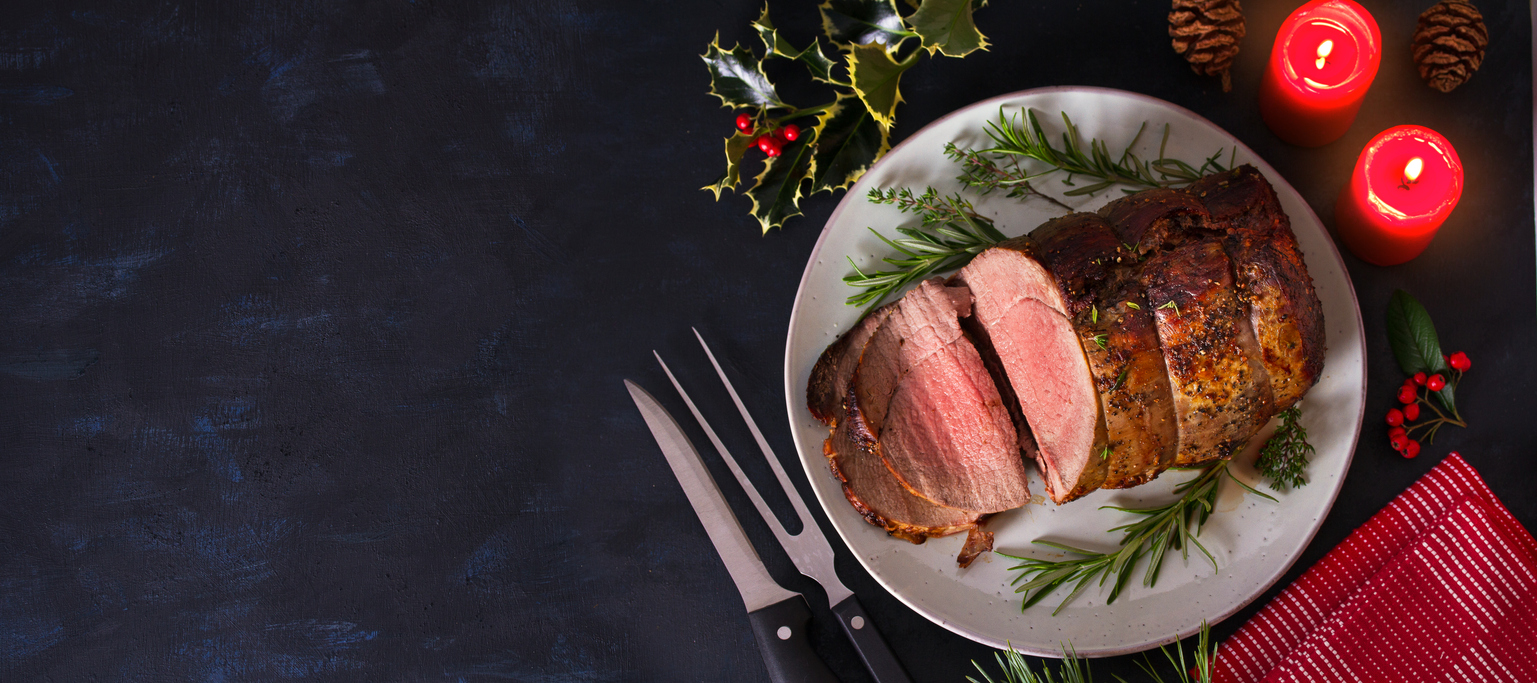Christmas is coming – but if the geese are getting fat, the turkeys aren’t terribly happy, cooped up indoors on account of avian flu. Around half of the free-range birds produced for Christmas in the UK have been culled or died due to the illness, according to the British Poultry Council – and for those that remain, the government’s anti-infection measures mean they aren’t ranging anything like as freely as before. Some butchers, including the Ginger Pig chain, have announced they aren’t selling turkey at all. So if we can’t get a happy turkey, what should we be eating on Christmas Day?
Turkeys might seem like the stalwarts of the Christmas feast but they are, after all, New World birds, so latecomers to the festive table in these islands. It might seem like a break with tradition to have anything except turkey – the vast creature that Scrooge bore to the Cratchits’ Christmas table – but if you go back in time, there were lots of other options. As Pen Vogler pointed out in The Spectator last year, turkey was struggling to maintain pride of place on the festive table even before this; avian flu may well speed its decline.
The obvious alternative is goose, which is very hard to rear intensively, always good and doesn’t have the leftover problem, but that too is affected by avian flu. So what about the meat we probably all associate with the medieval table… boar, as in the ‘Boar’s Head Carol’, bedecked with a garland? As the food writer Annie Gray says in her admirable book on festive cooking, At Christmas We Feast: ‘A good boar’s head was time-consuming, fiddly and expensive to prepare. It carried an air of rampant masculinity with it, for boar hunts were notoriously dangerous and exciting. Once dead the carcass needed beheading (the head cut a way back down the spine) and then debristling… Then it would be brined, stuffed with meat from the rest of the boar made into a rich and heady stuffing before being sewed up and poached for several hours. Then it was left to cool, and decorated with gold leaf or colouring and greenery.’ Nope, I can’t see myself doing that either.
‘A good boar’s head was time-consuming, fiddly and expensive to prepare. It carried an air of rampant masculinity with it, for boar hunts were notoriously dangerous and exciting’
But boar is available. Queen Victoria had one every Christmas. The creature became extinct in England in the 17th century, and attempts to restore it here have often entailed cross-breeding with better behaved modern pigs. There is, however, one company which sources its boar from Europe where the wild beasts survive, The Wild Meat Company. At present because of swine flu in Poland (it’s not just the birds who are coughing and sneezing) it’s getting its boar from Spain. I tried its boar loin and found it very like, well, pork. Alas, it doesn’t offer heads, but a roasting joint would be a good option for Christmas. I should say that without any covering fat it could be dry, so if you have a friendly butcher who could give you some pork fat to wrap round it during cooking, that would be good; otherwise just follow instructions and be careful not to overcook. It would go nicely, I think, with cranberry sauce.
If there’s only two of you, or one person to cut and come again, you could consider its venison wellington, which is a very good way to serve this flavoursome tender meat. There are larger versions available, too.
Suckling pig is the other piggy option, traditional in Spain and Romania. It is a succulent meat and looks spectacular but for goodness’ sake don’t overcook it – up to four hours for a 10lb piglet, and the oven shouldn’t be too hot. And make sure to measure both piglet and your oven/roasting dish to ensure compatibility.
If you prefer a more manageable pig roast, Waitrose has a very festive pork crackling joint for £32 which really does crackle. It’s slow cooked, and will take one and a half hours to finish in the oven, though check it really carefully in the last half hour. But it’s a good-looking joint, which is meant to serve eight; I’d make it six. M&S does its own version too.

Before the turkey takeover there was in fact a large array of dishes served at Christmas. A festive menu by Robert May in The Accomplisht Cook (1660) includes brawn (pigs’ head in jelly), mutton, capons, veal, partridge, roast sirloin, venison, geese, turkey, a kid (with a pudding in his belly) and roast swan. There were giants on the Earth in those days.
But of them all, the truly traditional Christmas food is… roast beef. Indeed in the 18th century, plum or Christmas pudding would be served alongside it rather than eaten as a sweet course. The Georgians still ate a range of dishes at Christmas, but beef was predominant. Anne Gray quotes one foreign visitor to Britain of the period who observed: ‘Probably there is not a single table spread on Christmas Day that is not furnished with roast beef and plum pudding.’ Really, a fine joint of grass-fed beef is a wonderful thing, and though hardly cheap, a mighty centrepiece to the Christmas table. Obviously your local butcher can oblige, but if you want to order online, Piper’s Farm does a magnificent rib joint, served on the bone, from £65.
And for those who can’t be doing with carving and don’t really fancy leftovers, how about a beef wellington, which looks splendid, is easy to cook and doesn’t need carving? Fortnum and Mason does a very good oven-ready one (500g) for £60 for four and a larger version that serves six to eight. And for those eschewing meat, there’s a pleasing butternut squash version for £40 so no one feels left out.
The point is, turkey really is not the only option for a Christmas feast; you can have other delicious things without feeling that you’re being un-Christmassy, and obviously they all go with roast potatoes (another New World import) and brussels sprouts. At least you won’t be eating the leftovers until the new year.







Comments